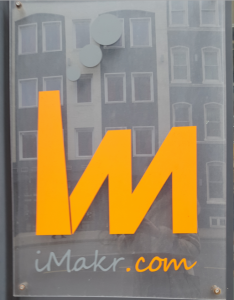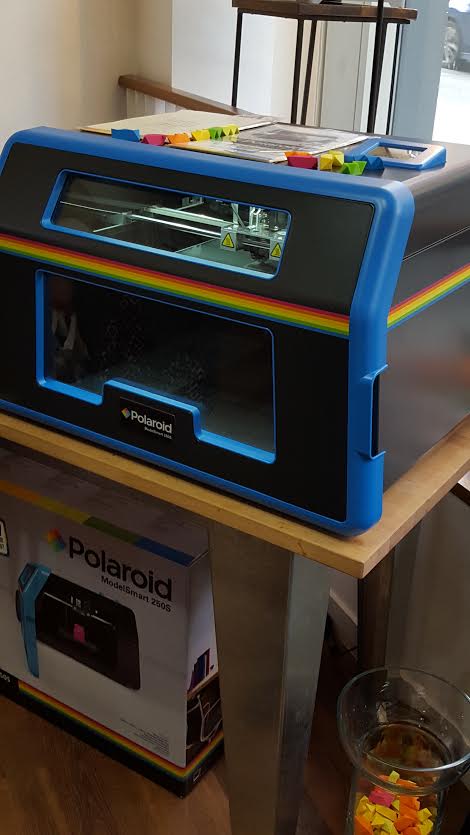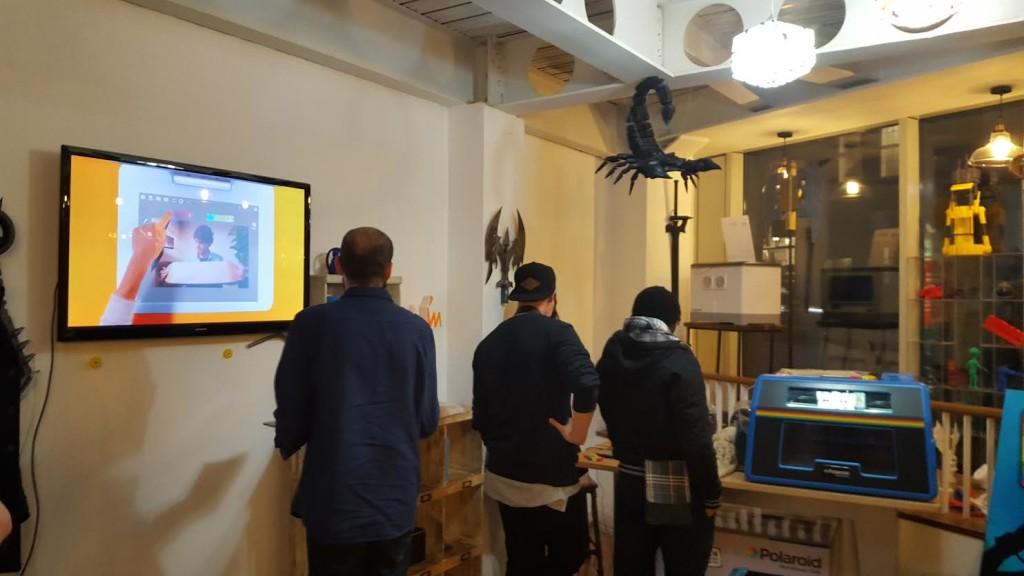 London’s iMakr Store offers what amounts to a “permanent tradeshow,” as CEO Eric Savant put it–and this past Thursday showed the store acting as an actual tradeshow, with the Desktop 3D Printing Show taking place for 6 hours, with more than 600 individuals registered to attend and more than a dozen companies showing off their desktop hardware in person into the evening.
London’s iMakr Store offers what amounts to a “permanent tradeshow,” as CEO Eric Savant put it–and this past Thursday showed the store acting as an actual tradeshow, with the Desktop 3D Printing Show taking place for 6 hours, with more than 600 individuals registered to attend and more than a dozen companies showing off their desktop hardware in person into the evening.
Upon walking into the store Thursday afternoon, my first impression of the event was that it was crowded; at about 4 pm on a weekday (admittedly, I arrived a bit after the start time), such a crowd was pretty impressive from the get-go.
The draw was clear: Londoners were flocking to the scene, eager to scope out the latest in desktop technologies. So many of them, in fact, it took me probably two hours to do a proper first lap of the event in the two-level store, with all the stops to scope out technologies and chat with everyone around.
My first booth stop was at Polaroid‘s table, where I had the opportunity to talk with Amy Horn, Category Director.
The 3D printer from Polaroid, just unveiled at CES in January, was on display as it gears up for its full European launch in April (global launch timing is TBD). Amy introduced me to the basics of the machine, which is intended to be a fully plug-and-play printer, ready to go right out of the box for “use for everyone, even with no experience in 3D design.” The difference that Polaroid was striving for with this design, Amy explained to me, is that it’s truly intended for everyone. The Polaroid brand name attached to this machine is no coincidence; they want the 3D printer to become as synonymous with user friendliness as the famed instant camera was for so long. The entire ecosystem is set to be ready to go right out of the box, from hardware to software, bringing a new dimension to the plug-and-play ethos.
The software is user-friendly by design, ready to go straight away with optimized settings in by default, though the 12 settings can easily be adjusted for various print jobs. Because the proprietary filament is smart-chipped, some settings will automatically adjust when they detect the spool loaded on; as, for example, orange PLA may have a different optimal temperature setting than blue, the printer will automatically read the material’s chip and adjust accordingly to what is loaded in. In addition to the temperature settings, the materials’ smart chips are intended to provide information on how much material remains on a spool. When a user begins a print job, they will be informed how much material will be needed (and whether the current spool has enough available), as well as how long the overall print will take. While proprietary materials often take a beating from a customer satisfaction standpoint, the smart chips in Polaroid’s system are at least set up to have a purpose, offering function along with the handcuff to the brand. In so far as the system is intended for at-home users who don’t want a lot of hoopla to their creations, the proprietary branding does make it easier for a newbie to ensure that all materials they buy are definitely compatible with the machine they have, and will work properly and interact with the loaded software.
The software additionally makes it simple to account for changes of material to allow for multi-color prints, which will necessitate a pause and swap. The final 3D printer will include a WiFi camera, as well, for remote monitoring from a mobile app, and will have a build envelope of 250 x 150 x 150 mm. Polaroid will start by offering six colors of PLA, as well as a wood material made of sawdust and glue, for their machines.
With an April launch set for Europe–the operations are London-based, and local production is important to the company–sales will be through distributors. We’ll keep an ear out for news on a global launch!
Subscribe to Our Email Newsletter
Stay up-to-date on all the latest news from the 3D printing industry and receive information and offers from third party vendors.
You May Also Like
Precision at the Microscale: UK Researchers Advance Medical Devices with BMF’s 3D Printing Tech
University of Nottingham researchers are using Boston Micro Fabrication‘s (BMF) 3D printing technology to develop medical devices that improve compatibility with human tissue. Funded by a UK grant, this project...
3D Printing Webinar and Event Roundup: April 21, 2024
It’s another busy week of webinars and events, starting with Hannover Messe in Germany and continuing with Metalcasting Congress, Chinaplas, TechBlick’s Innovation Festival, and more. Stratasys continues its advanced training...
3D Printing Webinar and Event Roundup: March 17, 2024
It’s another busy week of webinars and events, including SALMED 2024 and AM Forum in Berlin. Stratasys continues its in-person training and is offering two webinars, ASTM is holding a...
3D Printed Micro Antenna is 15% Smaller and 6X Lighter
Horizon Microtechnologies has achieved success in creating a high-frequency D-Band horn antenna through micro 3D printing. However, this achievement did not rely solely on 3D printing; it involved a combination...





























